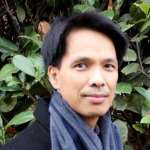![Marcus banner]()
Having worked in Pakistan with UNICEF, trained in aerospace medicine with NASA, and investigated the outbreak of SARS with the CDC, School of Population and Public Health (SPPH) Clinical Associate Professor Dr. Marcus Lem has some tales to tell, including about his first job: eating a gallon of pudding for a dessert commercial.
Suspiciously, no footage remains of his acting debut, but Lem has moved on to bigger things. An SPPH alumni who completed his residency at UBC, Lem has been Program Director of the Public Health and Preventive Medicine (PHPM) Residency Program for the past three years. With a diverse group of residents from across the globe, he says his students are like having the X-Men.
“They all seem to have these weird and strange powers that I don’t fully understand and they discover how to use and develop those powers while they’re in the residency program.”
Lem, who has been an SPPH faculty member for eight years, was drawn to Public Health after a one-year stint in General Surgery. He saw preventable injuries with serious consequences: irreversible brain and spinal cord injuries from car crashes and vascular surgery patients who had to have toes, then feet, then legs amputated. “I kept thinking, wouldn’t it just be better to enforce wearing seat belts or control their diabetes and stop them from smoking?”
He says the residency in Public Health was the best job he ever had, studying with world leaders in HIV treatment, working on polio eradication in the Northwest Frontier Province of Pakistan, delivering medical services in rural Tibet, and training in aerospace and diving medicine with the Canadian Armed Forces where he participated in training flights with night vision goggles and suffered nitrogen narcosis in a hyperbaric chamber.
Public health physicians are important because they understand not only the diseases that medicine and the health care system try to address, but also the socioeconomic and political contexts, the intentional and unintentional systems which affect health, and how it all fits together, he says. Many of his residents join the program after feeling ill-equipped to deal with the root causes of a patient’s health problems.
“It comes down to the old adage, ‘An ounce of prevention is worth a pound of care.’ It’s much better to try and prevent the disease than to try and cure it.”
What sets the UBC residency program apart is its structure, allowing maximum flexibility when it comes to training options, and the type of resident accepted into the program, he says. “Our clinical faculty have first hand experience working on SARS and Ebola. We recognize that having the best Public Health doctors requires training folks who come from diverse backgrounds, both culturally and educationally. We need future physicians who are can think on their feet, understand other cultures and work under challenging conditions.” But most of the work of Public Health gets done behind the scenes, he says.
![Marcus headshot]()
“Public Health doctors are scientists and public servants. We train our residents to analyze data and conduct research, formulate effective policies, allocate public resources responsibly, and communicate with politicians, the media and the public.”
A career highlight for Lem is his role in helping plan for and respond to Pandemic Influenza. As a director in Ottawa, Lem helped write the federal memorandum to cabinet and treasury board submission which obtained national pandemic funding. When the H1N1 outbreak started in 2009, working with the newly formed First Nations Health Authority, Lem managed BC regional operations for First Nations communities. The overall mortality for Aboriginal populations in Canada was five times that of the general population. In BC, it was on par, thanks to established relationships with communities, comprehensive pandemic plans, and extremely high uptake of antivirals and vaccine, Lem says.
However, Public Health can sometimes be scary. The 2003 SARS outbreak saw the deaths of doctors and nurses. While investigating the disease in Toronto at Sunnybrook Hospital, Lem was outfitted in two gowns, double pairs of gloves, two masks, goggles and a visor. When interviewing a nurse with SARS, the Infectious Diseases doctor accompanying Lem stood at the far end of the isolation room.
“After the ID doctor left, I went up to interview the patient and when I shook his hand, he said ‘You know, that’s the first time anybody has actually touched me since I was diagnosed with SARS’.”
For the future of the specialty, Lem envisions the development of new tools, including better use of mathematical modelling and geospatial analysis, and the more sophisticated analysis of “Big Data” including administrative data and genome sequencing. He sees the impact of global warming, and how society chooses to address it, as the single biggest Public Health challenge for future generations.
As the incoming Chair of the Health Officers Council of BC, Lem is proud to be a part of the Public Health community in the province. UBC represents the future, he says.
“Our graduates and faculty have been at the forefront of things. Look at how Public Health in BC addressed HIV and Harm Reduction, we’re way more progressive than the rest of North America and a leader in the world.”
Lem’s fond memories of SPPH are in no small part because his teachers, co-workers and students have become his friends. One Hallowe’en, Dawna, the PHPM program coordinator, dressed up in a “Marcus” costume, complete with round glasses and a clipboard with a list of ‘Marcus-y’ things to do. “Everyone thought it was hilarious, but also that one of me is enough!”


























